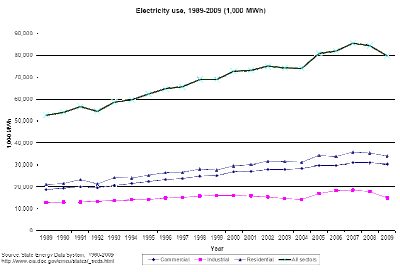A New Perspective
It might have been Hegel - really not sure - who introduced the concept of a 'threshold of oblivion' - a place, beyond which (at least for the moment), a person cannot see or conceptualize other possibilities.
In some sense, we are all at this threshold, all the time, but what we can see varies and changes with our experiences. And not everyone can see what we see. This is the difference of experience and a good reason for tolerance and compassion. I might also add that what we CAN see from our particular threshold needs to be subject to constant re-evaluation.
As mentioned in a previous post, the New York Times had a piece about political groups and individuals opposing community plans to address climate change and energy efficiency programming. They oppose it because they see it as a threat to their way of life. Perhaps their way of life is threatened, but by what?
I just finished Sven Birkerts, The Gutenberg Elegies about the "fate of reading in an electronic age" and it is a deeply felt and wonderful meditation about the value of reading and worry about its future in a new era of visual and hyper-linked communication that substitutes breadth for depth. This is, in part, a lament for the shift occurring before his eyes and the uncertainty that comes with it. I highly recommend the book and I share many of his concerns, which sit, side by side, with my fascination at what the new technology is bringing us on the positive side of the ledger. This is standing at the threshold staring into the unknown. For some this might be a point of oblivion, for others it might generate an imaginative and conceptual flurry of activity and creativity. Where one fits in this schema depends on previous experience, inclinations, etc.
Thomas Kuhn, who gave us the 'paradigm shift' in his, The Structure of Scientific Revolutions, outlined many of the causes and conditions for what becomes a new way of proceeding with the concerns of science. This includes the realization that the old ways no longer fit the bill, answer the problems or help us solve the puzzles related to scientific inquiry. The new 'way' becomes the new 'paradigm' and its adoption is the 'paradigm shift.' This is 'thinking outside of the box' (the box being the old paradigm) and other modes of discourse so prevalent in marketing strategies these days. (Kuhn's book was published in 1962)
Next on my reading list was
Break Through:
From the Death of Environmentalism to the Politics of Possibility. Authors Michael Shellenberger and Ted Nordhaus published this in hopes of getting the environmental movement to realize that a new day needs to dawn and that the means and methods that gave us the EPA and the Clean Water Act are not working any longer. Relative to the concerns of Shellenberger and Nordhaus: we cannot have a paradigm shift without a new paradigm. The Break Through authors are valiantly suggesting options - it will be up to the specialist in power to move.
One of the most important points of Break Through calls for the inclusion of humankind in all conceptualizations of nature and the environment. It is logically impossible for it to be otherwise and it does not seem functional to pit 'man vs. environment' in future discourse. If we're going to be holistic don't hedge.
Kuhn writes in his opus: "Professionalization leads...to an immense restriction of the scientists' vision and to a considerable resistance to paradigm change." He is writing about the institutionalization of theories, means and methods that make up a paradigm and become, to those not careful, a rigid orthodoxy. Through other works, like Christine MacDonald's Green, Inc., one can easily imagine (even if the content is only half true!) that changes in the fundamental ways of conceiving and doing this work would be tough to come by. She exposes relationships between industries and environmental organizations that are troublesome, at best.
Now, back to the NY Times piece in which Tea Party activists see green projects as stemming from a United Nations plot based on a UN Resolution known as Agenda 21. Many people with energy efficiency and environmental concerns (including myself) had never heard of this. Many 'best practices' for planning and resource management, budget management and limiting the cost of government operations seem to be rolled into it.
The piece concludes with a quote from a Roanoke County, Virginia Board of Supervisors member who voted to continue to support sustainability planning: “The Tea Party people say they want non-polluted air and clean water and everything we promote and support, but they also say it’s a communist movement,” said Charlotte Moore, a supervisor who voted yes. “I really don’t understand what they want.”
It may be hard for all of us to navigate a rapidly changing political, economic and environmental climate. It sounds frightening for humankind to no longer be the measure of all things. It might seem like a violation of rights when we're asked to shift our view from one which sees the Earth as something to serve humankind to one in which we must learn to live in harmony with the Earth. This is another Copernican Revolution and not all will understand or accept the significance of the matter at the same pace.
I'll be surprised if I don't revisit and revise this as time goes on...hopefully it will start a few discussions.













